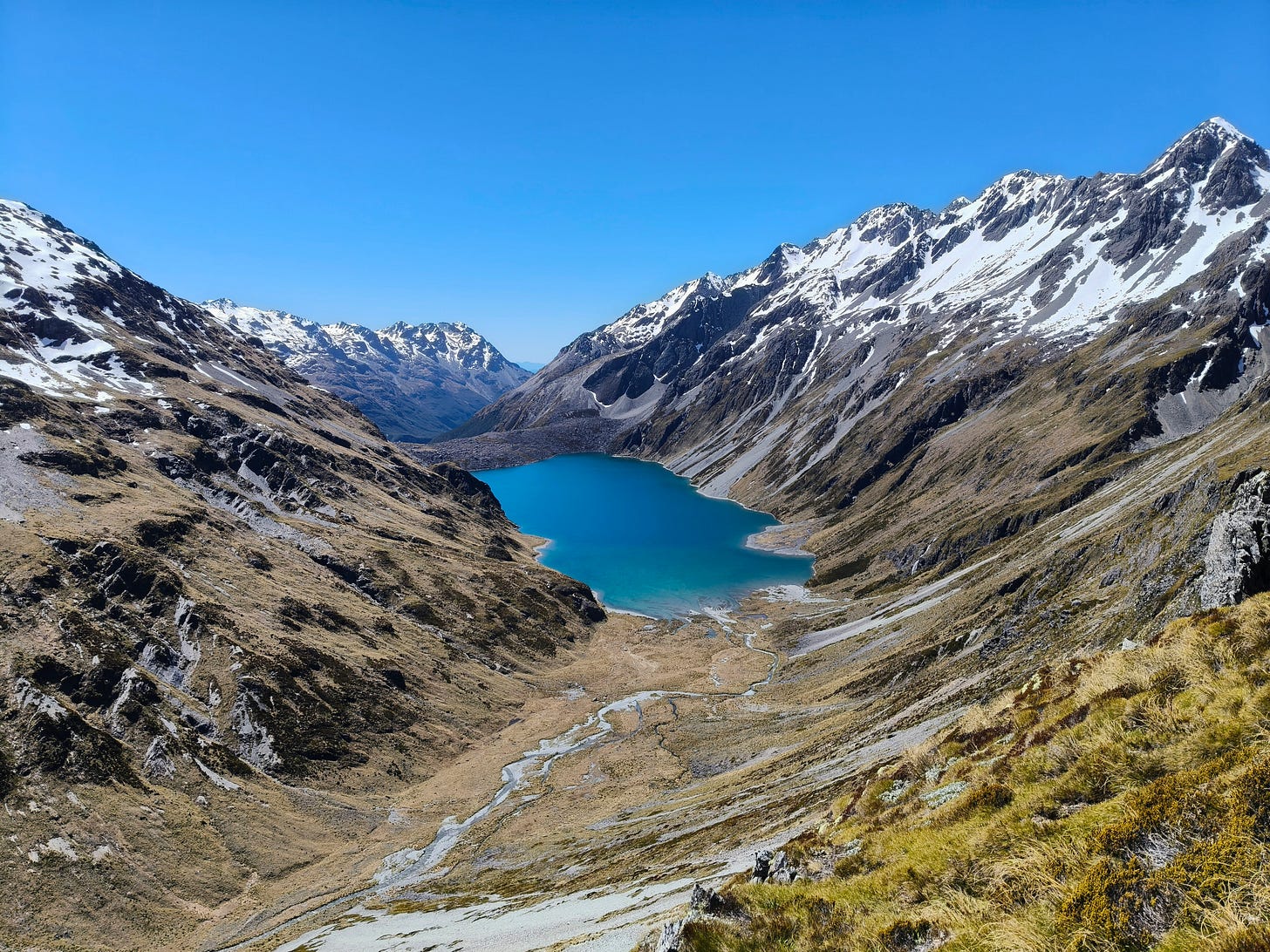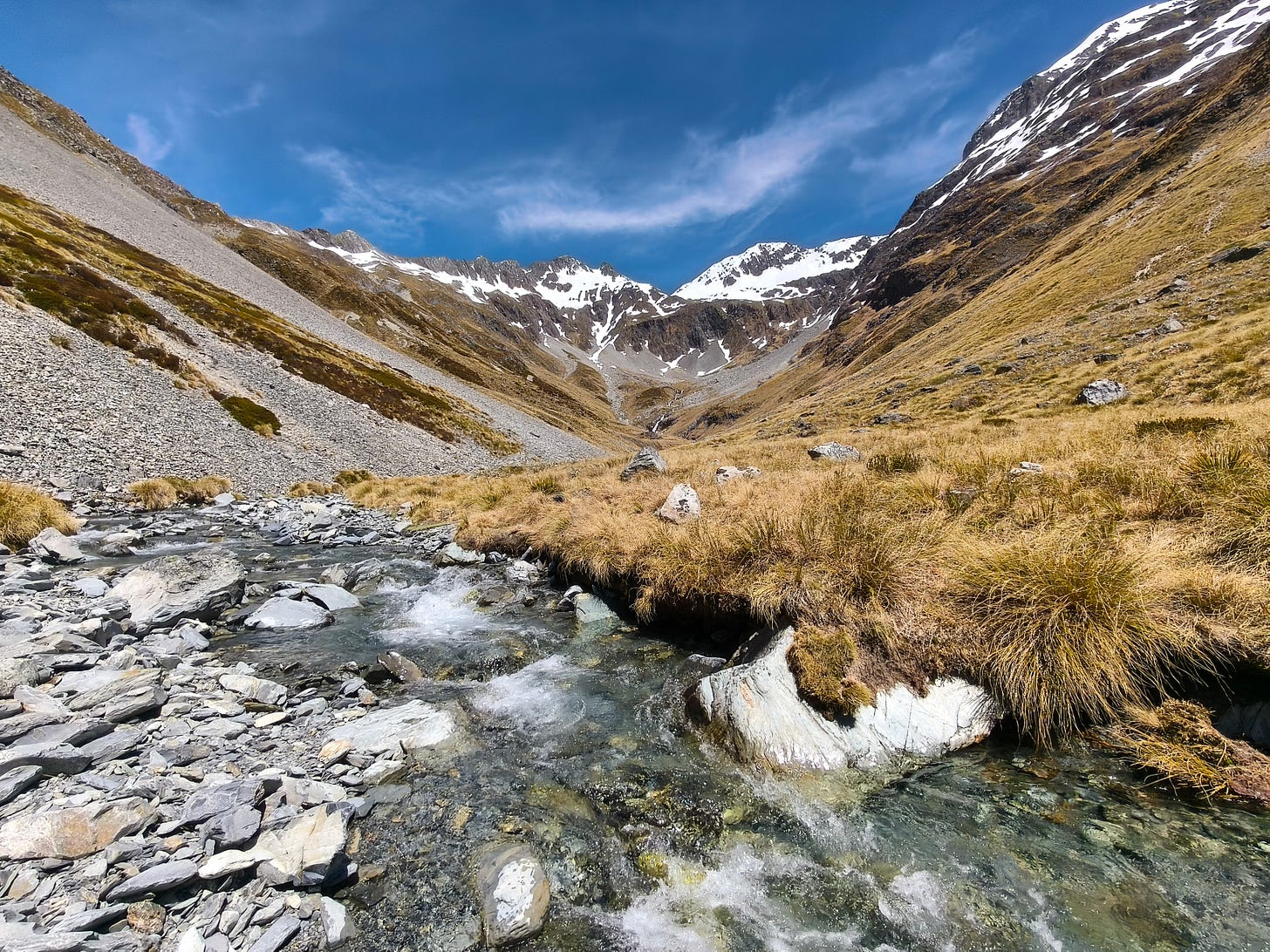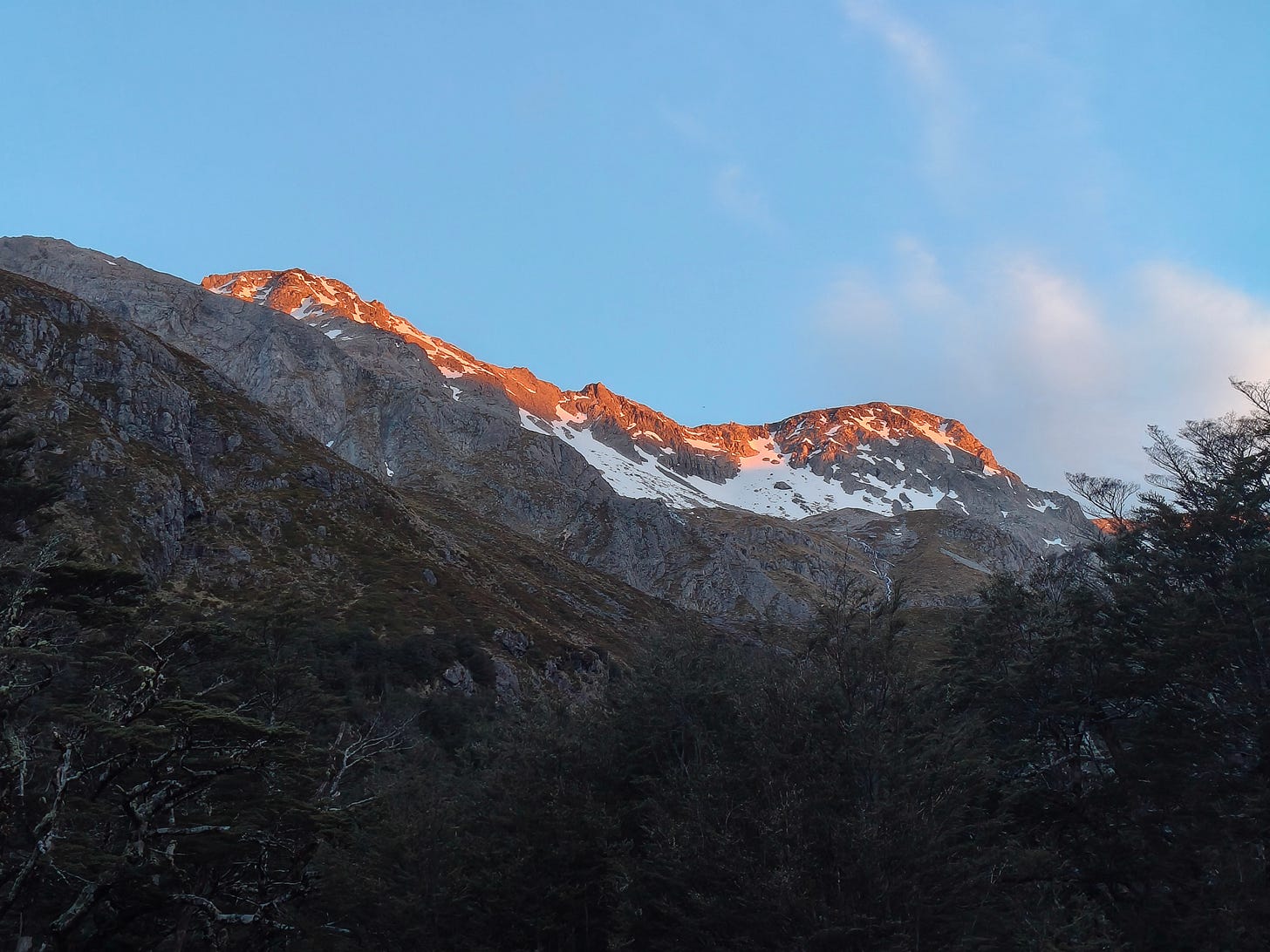Day 22: Blue Lake Hut to somewhere, wherever, I don't mind
Trip notes from my journey across the South Island with my little blue boat. Which is actually a packraft. With lots and lots of (too much) hiking between the water.
To pass or not to pass: that is the question.
It’s the question I sort of already knew the answer to. But I still went anyhow. Something about me wouldn’t let me head back down the valley, the way I’d come, without seeing for myself. So up I went. Up I went to Waiau Pass, to see if I could pass Waiau Pass.
When I came round the Richmond Range last year, the TA walkers I met went straight on into this section and crossed Waiau Pass. No snow, just a bluebird day. It was late November. Here I was, just a mere three weeks earlier, hoping to do the same. Everything will turn out fine, right?
I hadn’t lit the fire at Blue Lake Hut, so when morning rolled around it was colder than a tent and I had very little motivation to actually get up and do the thing I was supposed to be doing. Eventually, around 7am, I forced myself out of the sleeping bag. This had the result of converting me from being warm, snug and clueless to being cold, numb and clueless.
Still, I got away from the hut a little over two hours later (I have been known to take three, I am just not very efficient at packing). Another bluebird roaster presented itself outside. I made it up the ascent to see Rotopōhueroa Lake Constance in a little under half an hour. It’s darker in colour and much larger than its relation down the hill.
The scree climb and walk around the lake took very little time and I became convinced this trip up to merely “check out” the pass was going to be fast. I even began to believe I was going to cross the pass. Lol.
The poled route delivers you to the southwestern shores of Lake Constance, a lake which, for cultural and biosecurity reasons, you are not allowed to touch. I imagine the thousands of hikers passing through here each year all definitely abide by that request...
Leaving the lake edge, the route follows the gentle valley floor for a short while, before making a 90 degree turn to head almost directly up the scree to Waiau Pass. I paused for a breather, trying not to be too intimidated by the giant climb that lay ahead. It does look very intense from the bottom.
I reattached my giant pack to my back, took a deep breath and began the ascent. The initial climb follows tussock and scrub which has managed to settle itself amongst the scree. Countless other trampers have gradually worn step-like features into the mountainside. This doesn’t last forever, however, and the main sidle across the scree soon commences. I looked back at the valley floor as I started to cross, noticing the river feeding Lake Constance now appeared microscopic. I don’t really mind heights, but I still found this a touch unnerving.
I took a wrong turn on the scree and found myself climbing too sharply. The stones started to slip and they were taking me with them. I decided my best bet was to return down and take the right path. This involved a somewhat sketchy slip and slide several metres back down the chunky grit. Back on the correct channel, I climbed up and off the scree for a steep ascent up more worn tussock steps. This then levelled off as it headed to the right some more over tussock and rock. And snow. More and more snow.
My mind was taken back to a sign I’d seen in Blue Lake Hut, warning of the pass and the expertise required to cross. It finished with the sentence: the south side of Waiau Pass generally holds snow through to early summer. Here I was on the north side and I was already seeing heaps of snow. And it was still spring.
My mind went back further in time, to last year, after coming through the Richmond Range. One night, in the lodge restaurant in St Arnaud, my trail buddies and I got chatting with another man who said he’d walked Te Araroa a few years back. He was reliving Waiau Pass with us, highlighting its steepness, and how he’d used a rope to lower his bag down one particularly precarious section. He had made it sound extreme. He had made it sound like the last place I wanted to be with a bulky, wobbly bag attached to me. Alone, with no rope. That method seemed redundant to me - it could scuff or tear my boat.
I affirmed to myself that the only safe call I could make was to turn back. This was what a bit of me had suspected for about 18 hours, now. Back would take me along a route I had already experienced. Back would take me back past all those avalanches and avalanche zones. Back would require a further re-think of this journey: about its route and whether I even have a full raft traverse in me across this island. Also, it had reconfirmed what I’d long known: it really is no North Island!








